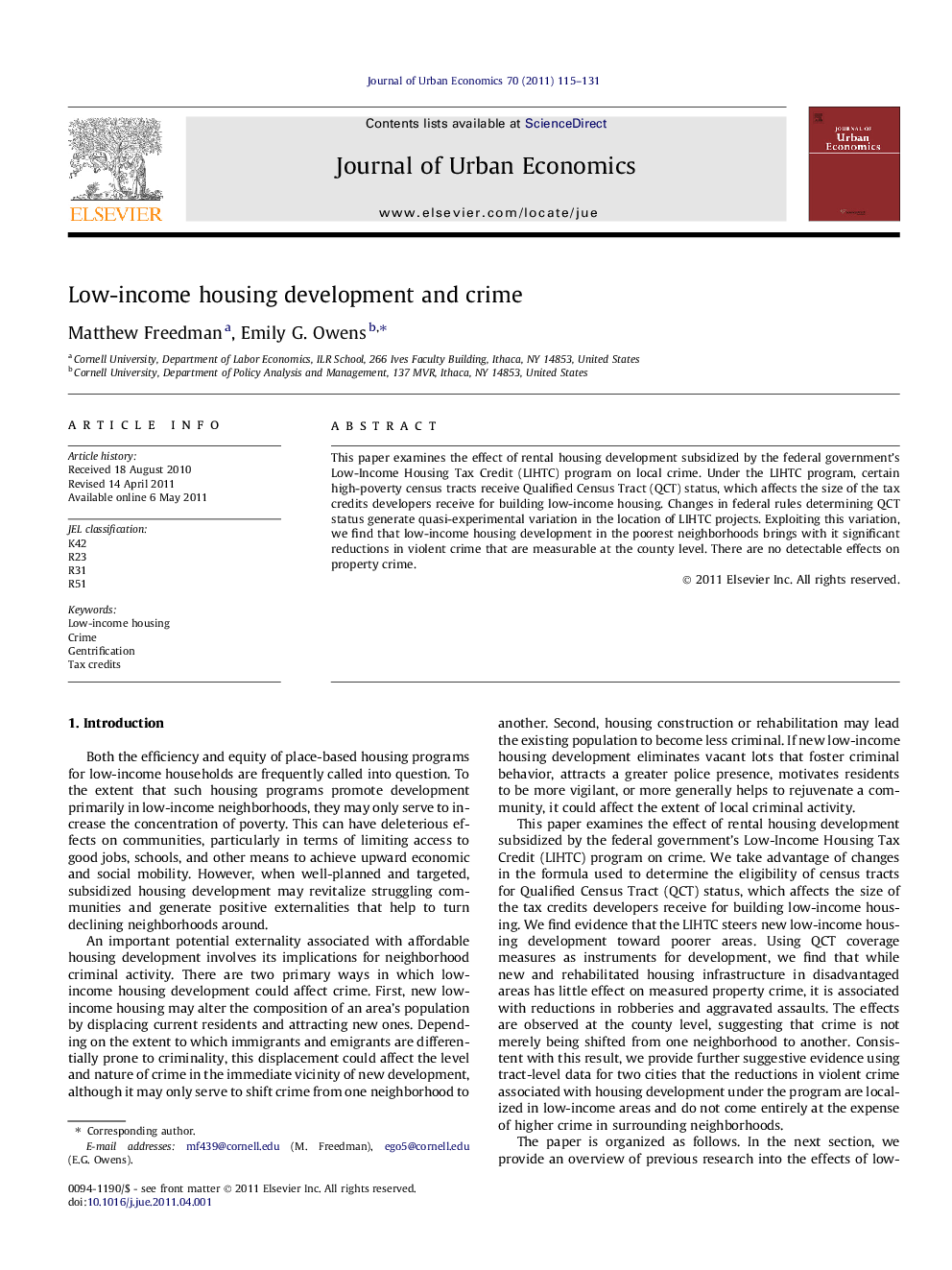| Article ID | Journal | Published Year | Pages | File Type |
|---|---|---|---|---|
| 971544 | Journal of Urban Economics | 2011 | 17 Pages |
Abstract
This paper examines the effect of rental housing development subsidized by the federal government's Low-Income Housing Tax Credit (LIHTC) program on local crime. Under the LIHTC program, certain high-poverty census tracts receive Qualified Census Tract (QCT) status, which affects the size of the tax credits developers receive for building low-income housing. Changes in federal rules determining QCT status generate quasi-experimental variation in the location of LIHTC projects. Exploiting this variation, we find that low-income housing development in the poorest neighborhoods brings with it significant reductions in violent crime that are measurable at the county level. There are no detectable effects on property crime.
Related Topics
Social Sciences and Humanities
Economics, Econometrics and Finance
Economics and Econometrics
Authors
Matthew Freedman, Emily G. Owens,
